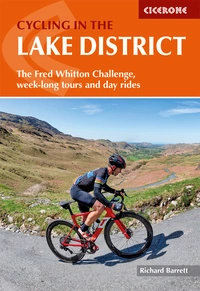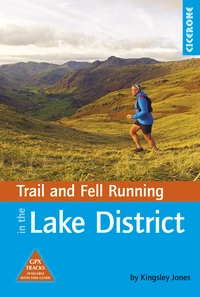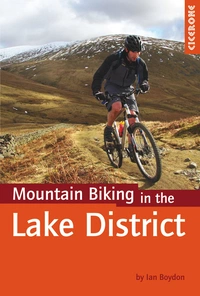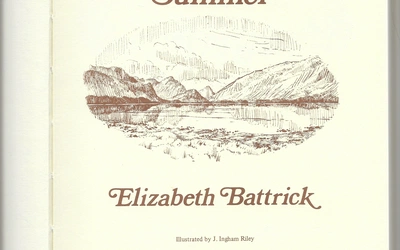Caring for the Lake District High Fells
Vivienne Crow, author of Cicerone's guide to the Lake District High Level and Fell Walks, is passionate about not only enjoying the fells but caring for them too. Here she explains a couple of important conservation projects, as well as some of the wildlife that can be appreciated in the Lake District's high fells.
Fix the fells
Most of the constructed paths encountered on the Coledale Horseshoe are the end product of the Fix the Fells project. Working with rangers from the National Trust and the Lake District National Park, as well as dozens of volunteers, the scheme repairs upland paths throughout the Lake District. With the erosive effects of millions of pairs of walkers’ boots every year combining with a climate that is, to say the least, wet, the most walked areas of the National Park get quite a battering. With fell-walking increasing in popularity, moorland paths that were once pleasant, grassy trails can become deep, boggy trenches; vegetation can be stripped from huge swathes of ground; and paths on steep ground can be reduced to little more than scree runs. Such erosion not only makes the paths uncomfortable and even potentially dangerous for people to walk on, it also results in more sediment being washed into the area’s rivers and lakes. This, in turn, affects water quality and wildlife.

Since the project was set up earlier this century, Fix the Fells has been responsible for repairing and maintaining more than 200 paths. It uses a variety of techniques including stone pitching, soil inversion and ‘floating paths’ made from sheep’s wool. The path leading down to Coledale Hause is one of the project’s many success stories. It’s hard to believe it now, but there used to be an erosion scar here – gouged out by rainwater – that was a couple of metres deep. But then Fix the Fells came along and carried out drainage work, constructed a path using sub-soil and filled in the ugly trench. Visit www.fixthefells.co.uk for details on how to donate or volunteer.
Wild Ennerdale
The Wild Ennerdale project was set up in 2002 as an attempt by the three major landowners – the Forestry Commission, National Trust and United Utilities – to allow nature a greater say in the valley’s future. The appearance of this loneliest of Lakeland valleys is already changing. Sitka spruces, planted in Ennerdale in the 20th century, are being felled and, as a result, native broadleaf species such as oak, birch, rowan and willow are returning. Spruce is allowed to regrow for the sake of diversity, but it is removed if it starts dominating. No conifers have been planted since 2002, except juniper, which is thought to have once flourished here. The name of the dale itself, long thought to be connected to the name of a chieftain, Anund, might even come from the old Norse word for juniper, einir.

Semi-wild Galloway cattle roam freely. They were introduced in 2006 when ecologists advised the Wild Ennerdale team that the grazing and disturbance caused by large herbivores, largely absent from British forests, was necessary to open the way for different plant species. Like everything else in the valley, they are mostly left to their own devices.
There are other mammals in Ennerdale too: red squirrels are most often seen in the western woodland; otters have recolonised the valley; both red and roe deer frequent the area; and there have even been unconfirmed sightings of the elusive pine marten.
Not just ‘another crow’
Ravens get a bad press – for centuries they have been regarded as a bird of ill omen and walkers who spot them on the fells often dismiss them as ‘just another crow’. And yet, researchers have discovered they are one of the most intelligent bird species on the planet. They have shown examples of playful behaviour and problem-solving abilities. In North America, for example, when they can’t open an animal carcass to get at the meat inside, ravens have been known to call wolves and coyotes to the site so that the animals do the hard work for them.
There are Raven Crags all over the Lake District – including one on Hartsop Dodd – places where the birds nest or have been known to nest. They build a home of twigs, soil and moss, lined with softer materials such as grass and wool. They mate for life and will stay in the same area all that time, fiercely defending their territory.
Walkers may become aware of their presence when they hear the ‘krorp’ sound that these enormous black birds sometimes make in flight. They also have a ‘crack-crack-crack’ alarm call and make all sorts of other unusual noises – like many of their relatives in the crow family, the birds are good mimics.
Their aerobatic displays are particularly impressive. With a couple of lazy beats of the wings, the birds gain height and then plummet earthward, performing all sorts of flips and twirls as they dive.
The red deer rut
Martindale is home to England’s oldest native herd of red deer, said to be the only herd that hasn’t cross-bred with sika deer. The ancient deer forest itself is centred on The Nab, but the deer range all over these fells and into neighbouring Mardale and Kentmere. If you walk Place Fell and Beda Fell in the autumn, particularly in the early morning or late evening, you may hear an eerie noise: like a cross between the deep mooing of cows and the rumble of distant trail bikes, it is in fact the sound of the deer rutting.
This deep bellowing means the stags, who congregate in single-sex herds for much of the year, have gone their separate ways and are now gathering their individual harems for the mating season. The roar performs two functions. Firstly, the loudest and most frequent wins the females. Secondly, it forms part of the posturing used by a male to achieve dominance over other stags. Another element of this is the antler fight, during which the animals lock antlers and attempt to push each other away. The strongest secures hinds for mating.
The rut lasts about six weeks, during which time stags will patrol their harems chasing off any rival stags that come near and ensuring their hinds, numbering as many as 40, are not tempted to stray. At the end of this period, the stags, often emaciated from such an energetic few weeks, leave the females. The young are born from mid-May to July.

Birds of prey
England’s last golden eagle nests on the slopes to the north of Rough Crag on the ridge route on to High Street. Eagles have called this valley home since 1969, and have fledged 16 young in that time. The current resident arrived in 2001, but his mate disappeared in 2004. One of the best times for trying to spot him is late winter and early spring when he performs his usual mating display flights and starts rebuilding his eyrie in preparation for the nesting season. The Lake District is home to a variety of other birds of prey too. A pair of osprey made the shores of Bassenthwaite Lake their home in 2001. You’ve a chance of spotting these magnificent fish-eating birds on the Skiddaw route (Walk 1 in the Lake District High Level and Fell Walks guidebook). Watch for their white or slightly mottled underparts. The long wings are angled and have a distinctive black patch that contrasts with the white wing linings.
Another reintroduced species is the red kite. Ninety birds were released in Grizedale Forest between 2010 and 2012. With their deeply forked tails, angled wings and reddish-brown colouring, these large but amazingly graceful birds are unmistakeable in flight. Watch too for peregrine falcons with their distinctive yellow beaks and talons. Nesting on crags throughout the Lake District, these impressive raptors are just about the fastest creatures on the planet, said to be able to fly at speeds in excess of 160kmph when in pursuit of prey.
So, please do enjoy the fells but try to care for them too. Remember the mantra - take nothing but photographs and leave nothing but footprints.













